The NT flag
Flying the NT flag
You are encouraged to fly the Northern Territory (NT) flag at your workplace or your home.
How to fly the flag
The NT flag should be used with respect and dignity.
When flying the NT flag you should:
- raise the flag quickly
- raise the flag no earlier than dawn and no later than dusk
- when the flag is raised/lowered/carried in a parade everyone should be silent
- people in uniform should salute when the flag is raised or lowered
- flag should be flown freely and close to the top of the flagpole
- flag rope should be tightly secured
- illuminate the flag if flown at night.
You should not let the flag fall or lie on the ground. The flag should not be used as a cover, unless it is to be used to cover a coffin at a funeral.
How not to fly the flag
You should not fly the NT flag:
- with another flag on the same flag pole
- upside down even as a signal of distress
- if it is damaged or faded
- at night if it is not illuminated.
Flying the NT flag with other flags
Australian flag
The Australian national flag takes precedence over all other national flags when it is flown in Australia.
The following rules should be followed:
- it should be raised first and lowered last unless all flags are raised and lowered at the same time
- it should be the same size as other flags or ensigns
- it should be flown on a flagpole the same size as other national flags
- when flying with one other national flag it should fly on the left
- it should not be flown in an inferior position to flags or ensigns.
Flag order by priority
You should prioritise flags in the following order:
- Australian national flag.
- National flag of other nations in alpabetical order.
- State and territory flags as follows:
- New South Wales
- Victoria
- Queensland
- South Australia
- Western Australia
- Tasmania
- Australian Capital Territory
- Northern Territory.
- Other flags approved under the Flags Act 1953 including:
- Aboriginal flag and Torres Strait Islander flag (in either order)
- Defence ensigns as follows:
- Australian Defence Force
- Australian White
- Royal Australian Air Force
- Ensigns and pennants including:
- local government
- Commonwealth, state and territory agencies
- non-government organisations.
The order of priority can vary on some military occasions or establishments.
The Australian national flag can be followed in the order of priority by defence ensigns and military pennants ahead of other flags, ensigns and pennants.
Flying the flag at half-mast
Flags are flown at half-mast as a sign of mourning.
The half-mast position will depend on the size of the flag and flag pole.
The position of the top of the flag should be a third of the distance down from the top of the flagpole.
When lowering a flag from the half-mast position it should be briefly raised to the top and lowered ceremoniously.
The flag should never be flown at half-mast at night even if illuminated.
When flying the national flag with other flags, all flags should be flown at half-mast. The Australian flag should be raised first and lowered last.
The Northern Territory Government will give advice when flags are to be flown at half-mast.
Protocol NT will contact NT flag marshals by email about these occasions.
You can register to be an NT flag marshal by emailing protocol.dcm@nt.gov.au.
How to dispose of the flag
You should dispose of a damaged flag in a private and dignified way.
Examples of how to fly flags
Example 1:
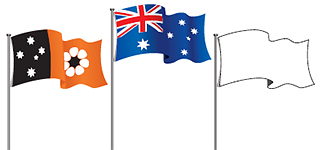
Example 2:
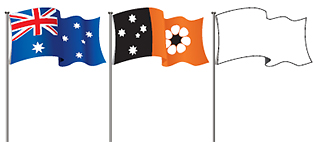
Example 3:
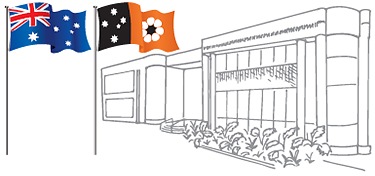
Example 4:
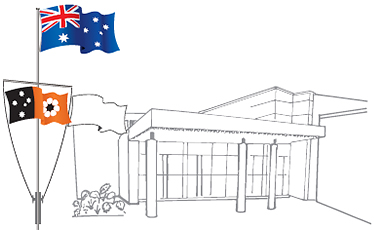
Example 5:
When the flag is displayed vertically against a wall or door the flag may appear to be in reverse. This is the correct way to hang the flag in this instance.
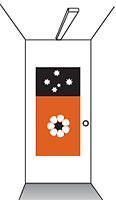
Example 6:
If hanging the Australian flag and the NT flag on a wall or in a landscape format the Australian flag should always be on the left and the NT flag on the right (when standing in front facing the wall).
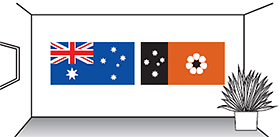
Print all pages in this section
Give feedback about this page.
Share this page:
URL copied!